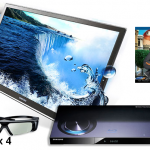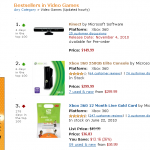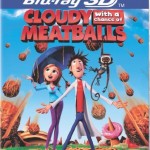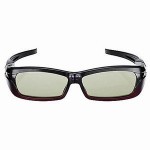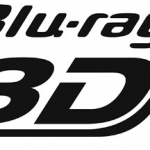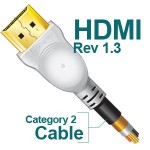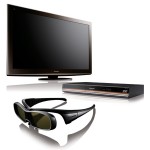A combination of a busy week for me personally, and a relatively quiet news week (World Cup related?), means there’s not much going on this week. There is so little this week that there is good justification for not even publishing a WNR this week. Well, not exactly that little going on, but the lazy side of me almost convinced me to skip. Unfortunately for you, I decided in the end to write this edition instead, so you’ll have to put up with even more ranting (given the absence of real news) than usual.

Starting with copyright news, I know I just said a paragraph ago that nothing much happened, except something really big did happen during the week, something of a landmark perhaps in the struggle between copyright holders and the Internet.

Viacom will be licking their wounds after having their massive lawsuit against YouTube thrown out of court
The big news was of course the judge’s decision to throw out Viacom’s lawsuit against Google’s YouTube. The judge decided that Viacom didn’t really have a case at all, not when YouTube is protected by the “safe harbor” provisions found within the DMCA. Safe harbor provides protection to publishers like YouTube as long as they show an adequate effort in trying to prevent copyright infringement. YouTube has always had a policy of removing copyrighted content if the copyright holders complain, and so the judge thought this was more than adequate. The fact that YouTube revealed Viacom employees may have been secretly uploading copyrighted content for promotional purposes may also have helped YouTube’s case. To be fair, this decision wasn’t a total surprise. Nearly defunct video sharing website Veoh won a similar lawsuit against the Universal Music Group, and that set the precedent to allow YouTube to get this victory this week. What this all means is that the court system now recognises that it may be impossible for mega websites like YouTube to completely prevent unauthorised copyrighted material appearing on their website, but that as long as they have a working policy in place, then the copyright holders should also share the burden of identifying and removing unauthorised content. The copyright holders, as always, want others to do their job because they believe that this problem was created by the Internet and the companies that profit from them, which to be fair, is a valid point. However, the same Internet has also provided many benefits and new opportunities to the same copyright holders, and it’s not anyone else’s fault if they choose not to take advantage.
Of course, Viacom will appeal, and who knows how the next judge will rule, especially in a technology based court case – the decision is very much based on how the judge grasps the technical issues. However, even Viacom must admit that YouTube’s anti-piracy tools are much more advanced than when Viacom first decided to sue, so perhaps part of their objectives has been achieved already, to make YouTube take copyright more seriously. When it comes to copyright, the current YouTube is much more copyright holder friendly, almost too friendly, what with the recent bout of “Downfall Hitler” parody removals. Perhaps this win will allow YouTube to readjust their removal policy to be a bit more balanced.

Is the BPI planning to sue Google, and if they were, will they still do it after Viacom's court setback?
While Google has just successfully escape one lawsuit (for now), techdirt believe that they may be set up for another one, this time over in the UK by the BPI. They analysed the way the BPI filled DMCA notices, and noticed the odd way in which it was done which reminded them of the way Viacom operated. The plan seems to be to get Google to be responsible for removing pirated content on file hosting networks such as RapidShare, again an attempt by copyright holders to get others to do their hard work. Of course, this was before the Viacom decision was handed down, so even if the BPI had plans to sue Google, they may be reconsidering now.
There seems to be many ways to fight piracy, but nobody has really consulted the public as to what they think will help reduce piracy. PC Advisor ran a poll, and like many similar polls, the results are always interesting. The public mostly understands the wishes of copyright holders to stop piracy, but most of them feel that this can be achieved via better pricing and better services, something I’ve echoed on these pages frequently. Of course, consumers always want to pay less for more, but the digital revolution actually allows for this to happen without hurting bottom lines (and may even help enhance it). Very few people will completely agree with the industry’s current anti-piracy strategy, which ranges from “legal blackmail” (as described by politicians in the UK, in response to actions by groups similar to the US Copyright Group’s mass litigation/pre-trial settlement mailings) to lobbying, or rather, scaring politicians to pass illogical and draconian laws to help the industry protect its income (do any other industries get the same level of support, from all major political parties, as the music and movie industries?)

Here's a picture of Vice President Joe Biden thinking hard about how he can be of even more help to his RIAA/MPAA buddies
But when lobbyist speak, the politicians listen, and the Obama administration has been very good friends with the RIAA and MPAA for the first part of their term in office. Vice President Biden, a long time friend of the RIAA, launched the White House’s new anti-piracy crackdown this week. Once again, Biden likened online piracy to actual store theft, and this time even increased the hyperbole by adding physical violence/damage to the equation. “This is theft, clear and simple. It’s smash and grab, no different than a guy walking down Fifth Avenue and smashing the window at Tiffany’s and reaching in and grabbing what’s in the window,” said Biden. Well, I think it’s a bit different to that actually. For the Tiffany’s example, there is actual physical damage (I would say this, in the online world, would equate to server hacking and damage of some kind), plus, what is stolen cannot be replaced without additional cost to the owner of the goods. This is simply not true with digital downloads, because the “original” has not been moved or damaged in any way. If anything, it’s more like someone walking into Tiffany’s, looking at a design for an engagement ring, and then going home and recreating the exact same ring at their own cost. This is also a sort of copyright theft, in that the design of the ring was “stolen”, and you could argue that Tiffany’s lost money due to a lost sale. But as you can see, this is very different to grabbing a brick and smashing up Tiffany’s to steal a ring. It’s hard to tell if Biden said this because he really wanted to help his RIAA/MPAA buddies, or whether he really believes this to be the case. If the latter is correct, then we’re all in big trouble, because paying lip service to your friends in politics is at least common place (although you may say ignorance is common place as well).
The administration’s new initiative did have any real specifics, but hinted at supporting industry attempts to get the ACTA shoved down the throat of citizens around the world, and even offered some kind of support for the controversial actions of the US Copyright Group. You would expect liberal institutions like the ACLU and the EFF to be in agreement with the Obama administration, but both have come out against the actions of the USCG, going as far as filing a friend of the court brief to prevent the USCG lumping thousands of defendants into the same lawsuit. The judge then asked USCG to explain why they did this, and the USCG now has replied to the court saying that the BitTorrent infrastructure is what made them do it. It argues that users of the same swarm upload and download from each other simultaneously while trying to obtain a full copy of the file in question, and so that’s how the defendants are linked. Of course, there’s no evidence that any of the defendants were part of the same swarm at all, and this also highlights one of the often ignored technical points of BitTorrent file sharing – that most users do not upload an entire copy of the file to any other user, only pieces, which when looked at as a piece of data, is completely useless. The technical argument to make here would be that because each users is only contributing a very small part of the pirated file, then perhaps the damages should reflect this as well. And if an user somehow managed to download a full copy of the file without providing any uploads, and thus only break the law in respect to obtaining pirated material, and not “make available” such materials, would their actions be more or less damaging than someone who uploaded hundreds of full copies of the same file? If you buy a pirated DVD from a stall, did you commit the same crime as the stall vendor who produced and sold the pirated DVD? These are all interesting questions I would like to see addressed in a full trial, but that’s something the USCG do not want, apparently.
That’s all the copyright news I had, and there isn’t much going on in terms of Blu-ray, 3D or gaming, certainly not as much as I would have to write about if I had my 3D TV at home, instead of still being on pre-order. Come on Samsung, don’t disappoint me.
There is actually a bit of gaming news that I didn’t post online, and that’s rumours of the Xbox 360 Kinect being priced at $119.95, as opposed to the widely believed price point of $150. The $150 Kinect is already selling quite well, certainly better than the PlayStation Move, so a cheaper Kinect might do even better. I do remember some Microsoft dude hinting that people will be very happy with the eventual Kinect pricing, which I suspect means the official pricing will be lower than what Amazon and others think it is now. If the news is still slow next week, then I will write up something about my thoughts on Move, Kinect and the Wii. It is my opinion that the Wii is actually a big failure *if* you do not count Nintendo’s software contributions to it, and it’s very unlikely Nintendo will help out Sony and Microsoft to make fun games for the Move/Kinect. Can Sony and Microsoft succeed where Nintendo has failed, to get third party publishers to produce great games that utilize each company’s motion control system, and if they fail in the same was in this regards as Nintendo, can Sony and Microsoft do what Nintendo can do with titles like Wii Sports, Wii Fit and Mario Kart?
That’s all for this week. I warned you there wasn’t much happening didn’t I? Hoping for more stuff next week …

